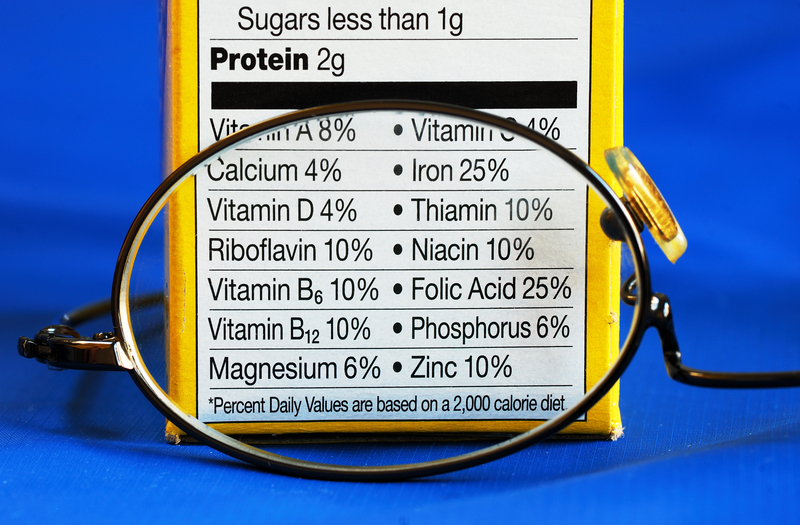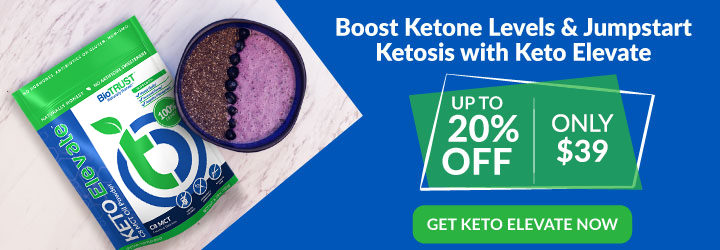3 Ingredients You Need to Avoid in Food Labels

Pretty much everywhere in the world, if you buy food that’s been packaged, you’ll find a list of ingredients and some nutrition facts to help you understand what’s in the food you’re eating. While there have been improvements to help us understand what’s in foods, the lists of ingredients can become long and overwhelming. This is especially true for ultra-processed foods.
So, how can you make the right choices for you and your fitness, health, or weight-loss goals?
In a previous article, we broke it down and shared How to Decipher Nutrition labels. And as we stated, it’s not enough to just know the nutrition breakdown or the total calories, fats, carbs, etc. in a food. Going deeper and digging into the ingredients can tell you a lot about foods, especially those that may be masquerading as healthy options even though they contain ingredients that are less so. For instance, you may find a package that claims the food is low in sugar, yet it contains multiple sources of sugar.
What Ingredients Are Listed?
In the U.S., all of the ingredients found in the food need to be included in the ingredients list. That includes the main ingredients, added nutrients (e.g., vitamins and minerals), sweeteners, flavors and spices, as well as any additives.
Ingredients are listed by their most abundant ingredient first (determined by weight) followed by the next. Some labelers are good at combining or separating ingredients, so the food looks like it has more or less of an ingredient. For instance, proteins may be listed together as a proprietary formula or blend, so protein can be listed first. Sugars, though, may be separated out, so they can be listed further down the ingredients list. The same type of ingredient may be listed multiple times under different names. For example, sugar can be listed as:
- Agave
- Beet sugar
- Brown rice sugar
- Corn syrup
- High-fructose corn syrup
- Honey
- Organic Honey
- Molasses
Sugars can also be listed under a chemical name, such as fructose, maltose, galactose.
Sodium is another ingredient that has various aliases, such as:
- Baking soda
- Brine
- Monosodium glutamate (MSG)
- Salt
- Sea salt
- And sodium benzoate.
Manufacturers aren’t necessarily trying to be tricky (though some are) by listing these individually. Rather, many are doing their best to be as accurate as possible. For instance, they may include multiple forms of a specific vitamin or nutrient, or the ingredient has different purposes. For instance, both sea salt and sodium hydrogen carbonate (i.e., baking soda) will be listed over just sodium, even though they both are included in the amount of sodium in the food.
Manufacturers have also been accused of hiding sugars in food. This is sometimes the case. However, they’re also required by law to list all of the ingredients found in the food. So even though, for instance, honey contributes to the sugar count, it will be listed separately from organic agave nectar or sucrose. This is why it’s a good idea to look for the added sugars in the nutrition facts as well as looking at the sweeteners in the ingredients. That way, you’ll have a fuller understanding of the entire food product.
You will also find a list of bolded ingredients at the bottom of the ingredients. This includes foods that are most likely to cause allergic reactions, such as milk, eggs, fish, shellfish, nuts, wheat, and soybeans. Even if that ingredient isn’t found in the food, if the food could be contaminated with that ingredient or have trace amounts, it is required to be listed.
Ingredients You Can’t Pronounce
You may have heard that if you can’t pronounce the word, you shouldn’t eat it. However, a long, unfamiliar word doesn’t necessarily mean it’s unhealthy. For instance, you may see words like pyridoxine hydrochloride, steviol glycoside, microcellular casein, or ascorbic acid, which aren’t necessarily easy to say (or read). Yet they’re just the chemical names for vitamin B6, stevia leaf, milk protein, and vitamin C, which are all healthy ingredients that can fit into a variety of diets.
If you find that reading through nutrition labels is confusing or leaves you overwhelmed and fixated on every single ingredient, take a step back. Remember, healthy eating is about what you eat consistently over time. If most of your foods are whole, natural foods like quality proteins (e.g., fish or seafood, beans and legumes, lean red meat, and nuts), vegetables and fruits, and healthy fats, then the occasional processed food can still fit into your overall diet.
Becoming obsessed over healthy eating can cause more harm than good and can even lead to disordered eating. So even if you eat a food that contains an ingredient you don’t typically include, remember your overall diet makes the biggest impact.
RELATED: Collagen Doesn’t Work (Unless…)
Dos and Don’ts When Reading Food Labels
- Do know names (including alternative or aliases) of foods you’re allergic to or intolerant of or that just don’t make you feel good. Scan for those ingredients before you purchase the food.
- Do focus on the top five ingredients on the list as those are the main ingredients.
- Do scan the rest of the list to see what else is in the food.
- Do watch the ingredients as well as the nutrition facts, especially if you have a health concern that can be affected by, say, the amount of sugar or saturated fat in the food.
- Don’t reject foods just because you don’t recognize or can’t pronounce all of the ingredients. If you are unsure of an ingredient, you can always look it up. This could include vitamins and added ingredients that help prevent the food from spoiling. Or, they could be chemical additives or sweeteners you don’t necessarily want to eat.
- Don’t become obsessive over ingredient labels or specific foods. Instead focus on your overall dietary patterns and how they are taking you closer to your health, fitness, or weight-loss goals.
- Don’t believe the hype. Many manufacturers will add big colorful claims to the front of the package that make the food look healthier than it may be. Words like natural, antioxidant, artisanal, and other buzzwords may mean nothing at all.
Ingredients to Avoid
Yes, all things in moderation, but there are some ingredients that really don’t add to your goals and can cause more harm than good. Here are the top 3 to avoid when reviewing food labels:
1. Refined Vegetable Oils
Refined vegetable oils, including soybean, corn, and cottonseed: these highly processed oils can lead to a negative balance between omega-6 fats and the less readily available omega-3 fatty acids. Plus, due to the ultra-processing, many of these oils turn rancid before they’re even bottled. Instead, swap out these old vegetable oils with healthier options, such as avocado or extra virgin olive oil.
2. Fake Butter
Fake butter (e.g., margarine) which is made with ultra-processed oils that are rich in saturated fats and increase levels of inflammation. Choose grass-fed butter, olive oil, avocado oil, or even coconut oil instead.
3. Artificial Sweeteners
Artificial Sweeteners are sweeter than sugar and virtually calorie free. What’s not to love? Unfortunately, research has found these types of sweeteners can still lead to weight gain and obesity. These artificial products have also been shown to throw off gut health, reducing the amount of good bacteria. If you’re looking for something sweet, choose fruit or a natural sweetener instead. Honey, agave, and even applesauce can be used in recipes. Or you can choose a calorie-free, low-carb options like stevia, monk fruit, or erythritol.
Knowing how to read nutrition labels and understand what’s in your food is a good skill to develop. That way, you can make an educated decision on the foods you choose to purchase and eat rather than relying on marking hype or just eating foods that may taste good but don’t bring you any closer to your ultimate goals.




 7 Signs Your Body is Seriously Low on Collagen (not just wrinkles)
7 Signs Your Body is Seriously Low on Collagen (not just wrinkles) Health Expert: "Turmeric Doesn't Work (unless...)"
Health Expert: "Turmeric Doesn't Work (unless...)" 3 Warning Signs Your Probiotic Supplement is a Total Waste
3 Warning Signs Your Probiotic Supplement is a Total Waste

